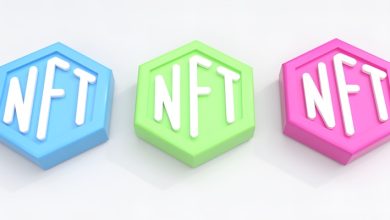How to Evaluate an Altcoin’s Long-Term Potential

- Understanding the fundamentals of the altcoin market
- Analyzing the team behind the altcoin project
- Assessing the technological innovation of the altcoin
- Examining the altcoin’s use case and adoption potential
- Considering the altcoin’s community and ecosystem
- Evaluating the altcoin’s historical performance and future outlook
Understanding the fundamentals of the altcoin market
When evaluating the long-term potential of an altcoin, it is crucial to understand the fundamentals of the altcoin market. Altcoins are alternative cryptocurrencies to Bitcoin, each with its unique features and purposes. By gaining a comprehensive understanding of the altcoin market, investors can make more informed decisions about which altcoins to invest in for the long term.
One key aspect to consider is the technology behind the altcoin. This includes the blockchain protocol it is built on, the consensus mechanism it uses, and any unique features that set it apart from other altcoins. A strong technological foundation is essential for the long-term success of an altcoin, as it can ensure security, scalability, and functionality.
Another important factor to assess is the team behind the altcoin. A talented and experienced team with a proven track record of success is more likely to navigate the challenges of the altcoin market and drive the project to success. Investors should research the team members, their backgrounds, and their previous projects to gauge their credibility and expertise.
Analyzing the team behind the altcoin project
When evaluating the long-term potential of an altcoin, it is crucial to thoroughly analyze the team behind the project. The individuals driving the development and execution of the altcoin play a significant role in its success. Here are some key factors to consider when assessing the team:
1. **Experience**: Look into the team members’ backgrounds and see if they have relevant experience in the cryptocurrency industry. Experience in areas such as blockchain technology, finance, and software development can indicate that the team has the necessary skills to bring the altcoin to fruition.
2. **Track Record**: Evaluate the team’s track record in previous projects. Have they successfully launched and maintained other altcoins or blockchain-based products? A proven track record of delivering on promises and meeting milestones can instill confidence in the team’s ability to execute on the current project.
3. **Transparency**: Transparency is crucial when it comes to evaluating an altcoin team. Are the team members readily accessible to the community? Do they provide regular updates on the project’s progress? Open and honest communication can build trust with investors and stakeholders.
4. **Diversity**: A diverse team with members from various backgrounds and skill sets can bring different perspectives to the table. Diversity in the team can lead to more robust decision-making and innovative solutions to challenges that may arise during the development process.
5. **Advisors**: In addition to the core team, consider the advisors working with the altcoin project. Seasoned advisors with expertise in relevant fields can provide valuable guidance and connections that can help propel the project forward.
By carefully analyzing the team behind an altcoin project, investors can gain insights into the project’s potential for long-term success. A strong, experienced, transparent, diverse team with reputable advisors can increase the likelihood of a project thriving in the competitive cryptocurrency market.
Assessing the technological innovation of the altcoin
When evaluating the long-term potential of an altcoin, it is crucial to assess the technological innovation that it brings to the table. This aspect plays a significant role in determining whether the altcoin will be able to stand the test of time and remain relevant in the ever-evolving cryptocurrency market. Here are some key factors to consider when evaluating the technological innovation of an altcoin:
1. **Consensus Mechanism**: One of the most critical aspects of any altcoin’s technology is its consensus mechanism. This is the protocol that governs how transactions are validated and added to the blockchain. Popular consensus mechanisms include Proof of Work (PoW), Proof of Stake (PoS), and Delegated Proof of Stake (DPoS). Each has its own set of advantages and disadvantages, so it is essential to evaluate which one the altcoin uses and how effective it is.
2. **Scalability**: Another crucial factor to consider is the altcoin’s scalability. This refers to its ability to handle a large number of transactions quickly and efficiently. Altcoins that can scale effectively are more likely to gain widespread adoption and remain competitive in the long run. Look for altcoins that have implemented solutions such as sharding, off-chain scaling, or sidechains to improve scalability.
3. **Smart Contract Functionality**: Smart contracts are self-executing contracts with the terms of the agreement directly written into code. Altcoins that support smart contracts open up a world of possibilities for developers to create decentralized applications (dApps) on their blockchain. Ethereum is a prime example of an altcoin that has gained significant traction due to its robust smart contract functionality.
4. **Interoperability**: Interoperability refers to the ability of different blockchains to communicate and interact with each other seamlessly. Altcoins that focus on interoperability are well-positioned to thrive in a multi-chain ecosystem where various blockchains coexist. Projects like Polkadot and Cosmos are leading the way in this space by creating bridges between different blockchains.
5. **Security Features**: Last but not least, security should be a top priority when evaluating the technological innovation of an altcoin. Look for altcoins that have robust security features, such as encryption, multi-signature wallets, and regular security audits. A secure altcoin is less susceptible to hacks and vulnerabilities, which can significantly impact its long-term viability.
By carefully assessing the technological innovation of an altcoin based on these key factors, you can gain valuable insights into its long-term potential and make informed investment decisions in the cryptocurrency market.
Examining the altcoin’s use case and adoption potential
When evaluating the long-term potential of an altcoin, it is crucial to examine its use case and adoption potential. This involves looking at how the altcoin solves a real-world problem or offers a unique value proposition. Additionally, considering how widely the altcoin is adopted within its target market can provide insights into its growth prospects.
One way to assess the use case of an altcoin is to analyze the problem it aims to solve and whether there is a demand for such a solution. Understanding the altcoin’s utility and functionality can help determine its relevance in the market. Furthermore, evaluating the altcoin’s competitive landscape can shed light on its differentiation and potential for long-term success.
In terms of adoption potential, it is essential to consider factors such as the size of the altcoin’s target market, its user base, and the level of community support. A strong and active community can contribute to the altcoin’s growth and sustainability over time. Additionally, partnerships with established companies or organizations can help drive adoption and increase the altcoin’s visibility.
Overall, examining the altcoin’s use case and adoption potential is a critical step in evaluating its long-term viability. By conducting thorough research and analysis in these areas, investors can make more informed decisions about the altcoins they choose to invest in.
Considering the altcoin’s community and ecosystem
One crucial aspect to consider when evaluating the long-term potential of an altcoin is the strength of its community and ecosystem. A thriving community can provide support, drive adoption, and contribute to the overall success of the altcoin. Here are some key factors to consider:
– **Active Community Engagement**: A strong community is characterized by active engagement, with members participating in discussions, sharing insights, and providing feedback. Look for altcoins with a vibrant community that is actively involved in promoting the project and driving its growth.
– **Developer Support**: The involvement of experienced and dedicated developers is essential for the long-term success of an altcoin. Evaluate the level of developer activity, the frequency of updates, and the responsiveness to community feedback. A committed team of developers can ensure the altcoin remains relevant and competitive in the ever-evolving cryptocurrency market.
– **Partnerships and Collaborations**: Partnerships with other projects, businesses, or organizations can significantly enhance an altcoin’s ecosystem. Collaborations can open up new opportunities for adoption, integration, and innovation. Consider the quality and diversity of partnerships when assessing the long-term potential of an altcoin.
– **Community Governance**: Some altcoins have mechanisms in place for community governance, allowing token holders to participate in decision-making processes. Community governance can foster transparency, decentralization, and consensus within the ecosystem. Evaluate how the altcoin involves its community in governance and decision-making.
– **Educational Resources**: A well-informed community is better equipped to support and promote an altcoin. Look for projects that provide educational resources, such as tutorials, guides, and documentation. These resources can help onboard new users, increase awareness, and foster a knowledgeable community.
By considering the strength of an altcoin’s community and ecosystem, you can gain valuable insights into its long-term potential. A supportive community, active development team, strategic partnerships, governance mechanisms, and educational resources are all indicators of a promising altcoin with the potential for sustainable growth and success in the competitive cryptocurrency market.
Evaluating the altcoin’s historical performance and future outlook
When evaluating an altcoin’s long-term potential, it is crucial to analyze its historical performance and future outlook. By looking at how the altcoin has performed in the past, investors can gain valuable insights into its stability and growth potential moving forward.
One way to assess an altcoin’s historical performance is to examine its price fluctuations over time. By analyzing price charts and trends, investors can identify patterns and cycles that may indicate whether the altcoin is a sound investment. Additionally, it is essential to consider any significant events or developments that have impacted the altcoin’s price in the past.
Looking towards the future, investors should research the altcoin’s development team, technology, and overall market potential. Understanding the team behind the altcoin and their track record can provide insights into the coin’s future success. Additionally, assessing the altcoin’s technology and its competitiveness within the market is crucial for predicting its long-term viability.
It is also essential to consider any upcoming updates or partnerships that could impact the altcoin’s value. By staying informed about the altcoin’s roadmap and future plans, investors can make more informed decisions about whether to invest in the coin for the long term.



